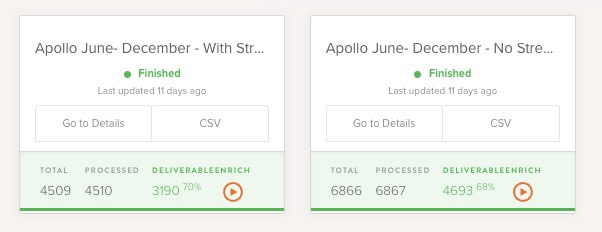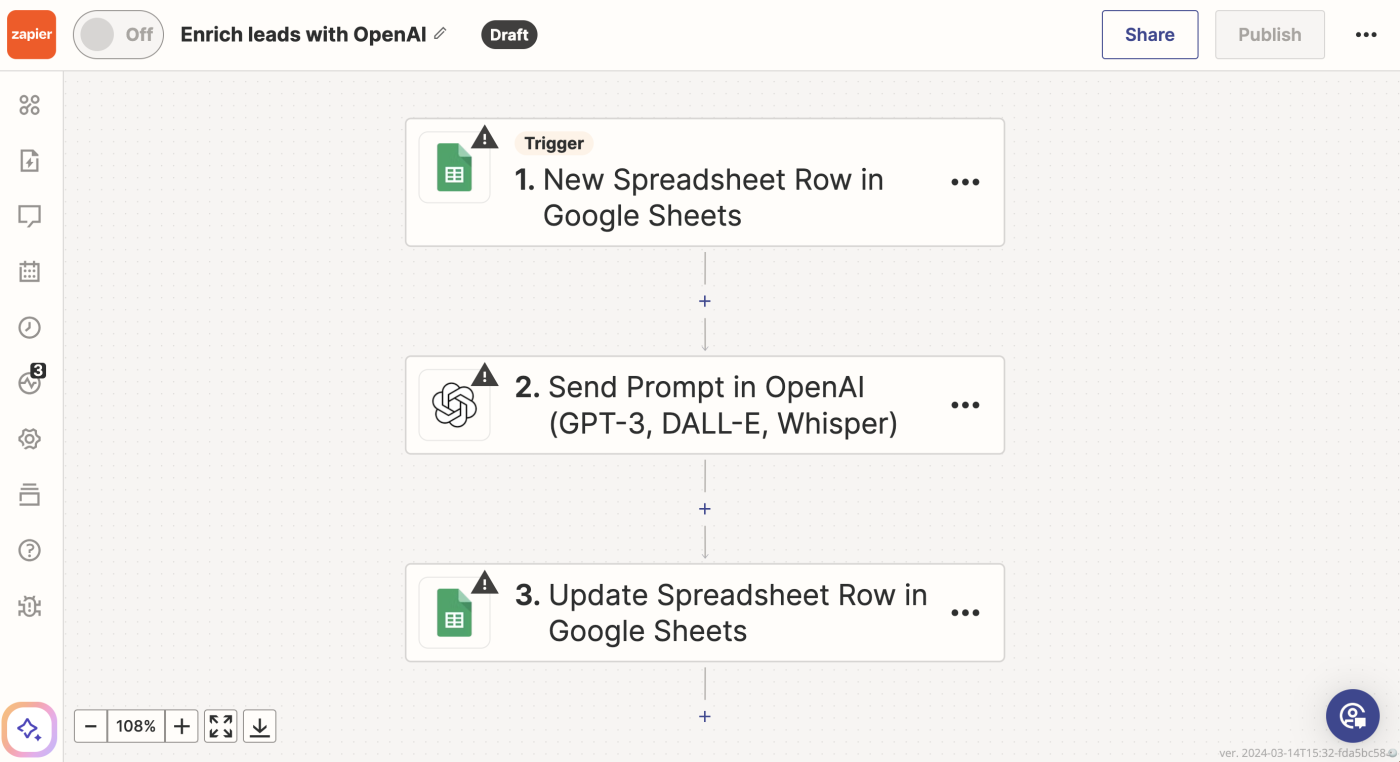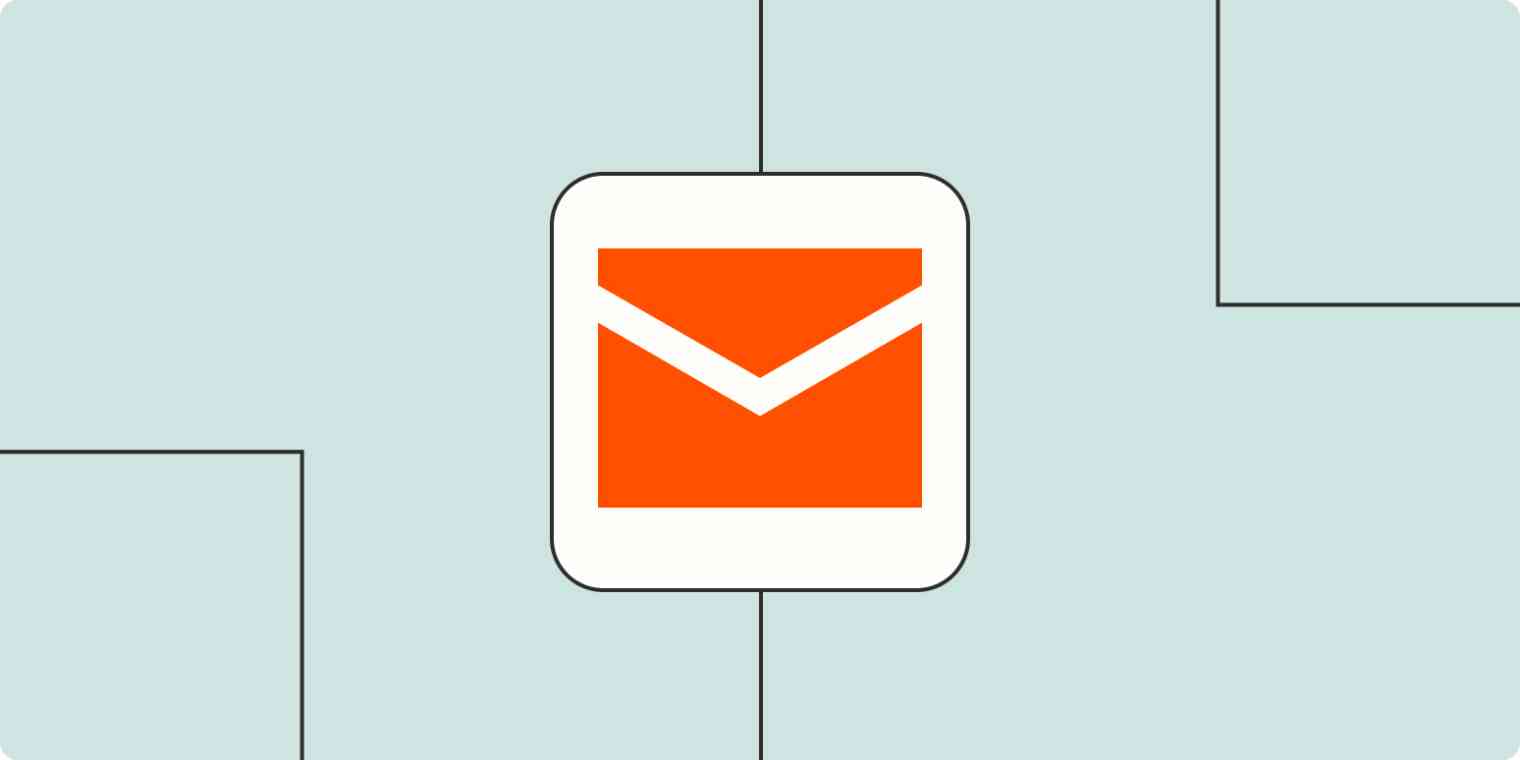Cold email is my favorite way to generate demand for B2B companies. It's cost-effective, easy to test, and scalable. But for a cold email campaign to work, several things need to be nailed—everything from the copy to the deliverability. In my opinion, one of the most important elements is the prospect list itself.
Here, I'm going to focus on building a solid prospect list to dramatically increase your chances of getting positive responses with cold emails.
What is a B2B prospect list?
A prospect list is a list of companies and decision-makers that could be a good fit for your product or service. At a minimum, it includes all the relevant contact details of specific individuals: their name, business email address, and job title.
The best prospect lists are enriched with additional data points, like the prospect's LinkedIn profile, notable clients, specific niches the company operates in, problems the decision-maker might face—the list goes on (and will change depending on your industry).
Without a curated—and accurate—prospect list, it's almost impossible to expect results with cold email marketing.
How to create a targeted list of prospects (based on my own 6-step system)
I didn't develop the perfect system right away. But through a lot of trial and error, research, and, of course, mistakes, I was able to land on something that's worked pretty consistently for me. Here, I'll share the six steps I take when building a cold email prospect list.
1. Define your ideal customer profile (ICP)
The first step in building a prospect list is to identify your ideal customer profile or ICP. An ICP is a detailed description of the attributes, characteristics, and demographics of the perfect customer for your business (at the company level).
Defining your ICP first will help you narrow down which companies and subsequent decision-makers will be most receptive to a cold email. Without this, you won't be able to craft a compelling angle, write any copy for the emails, or locate the prospects. That's why it comes first.
Here are the questions I usually ask my clients to get clarity on their ICP:
What does the perfect customer look like?
Who are your existing "bread and butter" customers?
What are the characteristics of companies you usually work with?
What do your previous or current customers all have in common?
2. Narrow down the decision-makers
Now that you know which type of companies would be the best fit for your product or service, it's time to determine the right individuals to email. I like to think of it as three groups of people you can contact:
Decision-makers: Anyone in a company with the authority to make the final purchasing decision. This often includes roles like CEO, CTO, president, and director.
Influencers: These roles don't have the authority to make a purchasing decision, but their opinions and recommendations carry weight and influence the decision-makers. They often include managers or senior managers.
Users: These are the individuals or teams within a company who will directly interact with the product or service you're selling. They don't usually make or influence purchasing decisions (unfortunately).
I recommend starting with decision-makers first, and only reaching out to influencers if you can't break through. Avoid users at all costs—it's very unlikely they can help.
To gain clarity on the specific decision-makers to contact, I like to ask my clients the following questions:
Who do you normally correspond with when closing a client?
Who was the decision-maker with your previous clients?
Who pays or deals with the invoices?
Who is the project sponsor?
3. Create the campaign angles
This is my favorite part of building a cold email campaign. In the context of an email, the angle refers to the value proposition, incentive, or lead magnet presented to the email recipient (i.e., your potential customer) to initiate interest.
Why do I suggest doing this before actually building the prospect list? Because it helps you understand the types of data points you'll need on your enriched list. For example, if your angle involves geography, then you'll need to ensure you have the physical address for each prospect. The same applies if you want to include a specific point about the company's tech stack.
Your angle can include offers—like promotions, free work, or trials—or you can be more straightforward and be transparent about why you're reaching out and how you can help.
There's no single way of approaching this, and I recommend you create more than one angle, so you can test them out once you have your list and see what works best.
I like to start with these questions if my clients are struggling to come up with an angle:
What's the problem your clients face?
What is their dream outcome?
What is the perceived risk to them?
Is there anything you can offer for free/minimal effort that would be valuable to potential clients (e.g., free audit, free trial, free strategy consultation)?
4. Build the prospect list using a B2B database
Once you have all your criteria, you won't need to go on a needle-in-a-haystack search for prospects. Instead, you can use a B2B database like Apollo, ListKit, or Zoominfo (I use Apollo since it's easy to use and very cheap to get started). Once you input the criteria for your ideal companies and decision-makers into these tools, it'll give you matching prospects. The more specific you are, the more it narrows down your list.
Whatever you do, steer clear from buying a random list. Chances are the emails won't be verified and the prospects won't be relevant. You'll ruin your deliverability rates and waste a lot of time and money.
5. Clean and verify your list
Now that you have a foundational list of prospects, you'll need to verify the domains and clean up any discrepancies. Verifying domains ensures that the email addresses you plan on contacting are legitimate—if you skip this step, you run the risk of a high bounce rate and even having your domains blocked due to spam.

Even if the B2B database you choose claims the emails are deliverable, it's best to double-check via a third-party tool—consider it a second opinion. (There have been a few instances where I trusted the deliverability of the email addresses a database gave me only to experience a high bounce rate.)
There are lots of email verification tools, including Voila Norbert, NeverBounce, and Hunter. I use Voila Norbert—I find it easy and quick, and it only costs about $15 for 5,000 emails.
6. Enrich your list

Once you have a solid list, you can start enriching it with key pieces of information that might make your angles stronger. Since you know which angles you want to test, you should have an idea of which data points could support them.
There are endless opportunities here. You could enrich a list with a sentence containing the specific problem each decision-maker faces at their company. You could identify their current tech stack. You could see if they have a dog. It's completely dependent on the angle of your campaigns.
Regardless, there are two common approaches I take when enriching a list.
GPT and a spreadsheet: With Zapier or a tool like GPT for Sheets, you can let AI take the wheel. Read this tutorial on connecting Google Sheets to OpenAI on Zapier, or watch this speed run to see how GPT for Sheets works.
Clay: Clay is a data enrichment tool that combines 50+ data sources, web scraping, and AI messaging to enrich your existing data. I'm a little biased since I'm a Clay expert, but I've found it incredibly powerful.
These aren't the only ways to enrich your list. You can leverage other AI sales assistant tools like BuiltWith (to discover tech stacks) or Lusha (to easily find other data points for your prospects).
Start emailing your prospect list
A well-crafted and enriched prospect list doesn't guarantee success, but it's a great start. You'll still need to warm up multiple email addresses, write the emails (including follow-ups), load the prospects into a tool (I use Smartlead), and schedule your campaigns.
Before I go, here are a few quick tips for the rest of your cold email campaign:
Warm up multiple email addresses from secondary domains for at least two weeks before you send any emails. You don't want to burn your primary domain and end up in spam.
Keep your emails all value and zero fluff. Not sure what to send? Reference the lemlist template library.
Keep your subject lines vague-ish to increase open rates, but avoid "Quick question"—it's been overused.
Be aware of Google's and Yahoo's new authentication requirements for cold email.
Good luck with your campaign!
Related reading:





